Input interpretation

indole-3-carbaldehyde
Chemical names and formulas
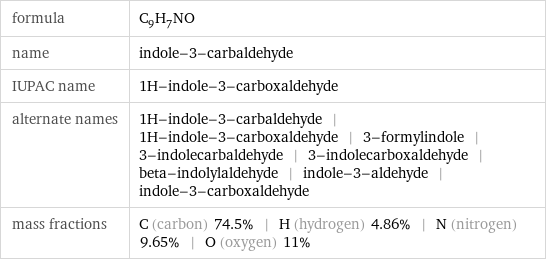
formula | C_9H_7NO name | indole-3-carbaldehyde IUPAC name | 1H-indole-3-carboxaldehyde alternate names | 1H-indole-3-carbaldehyde | 1H-indole-3-carboxaldehyde | 3-formylindole | 3-indolecarbaldehyde | 3-indolecarboxaldehyde | beta-indolylaldehyde | indole-3-aldehyde | indole-3-carboxaldehyde mass fractions | C (carbon) 74.5% | H (hydrogen) 4.86% | N (nitrogen) 9.65% | O (oxygen) 11%
Lewis structure
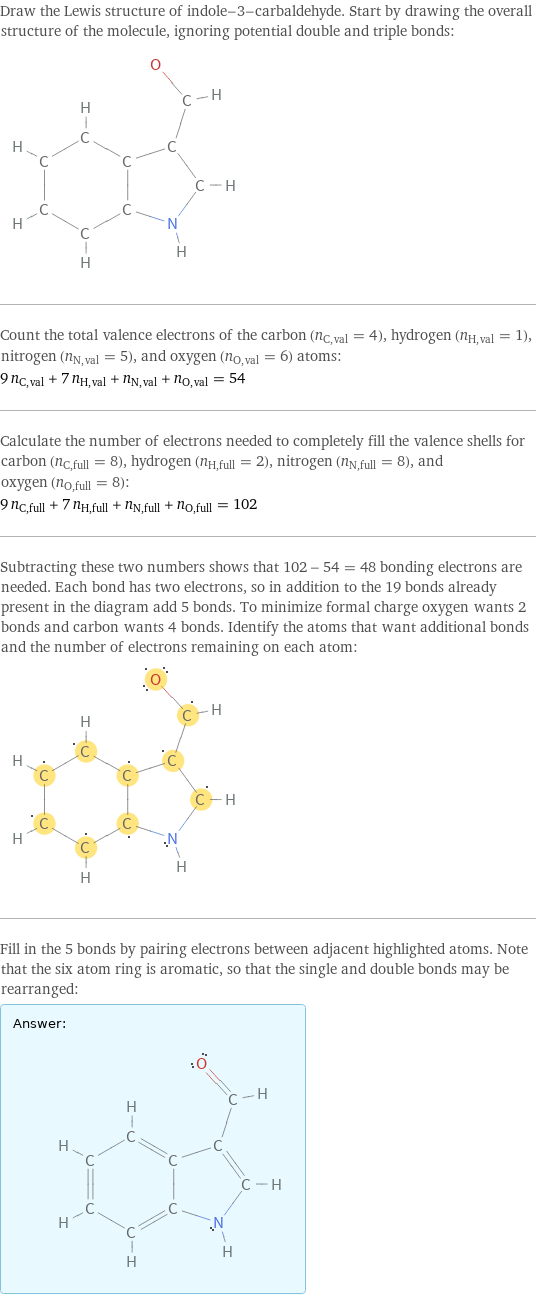
Draw the Lewis structure of indole-3-carbaldehyde. Start by drawing the overall structure of the molecule, ignoring potential double and triple bonds: Count the total valence electrons of the carbon (n_C, val = 4), hydrogen (n_H, val = 1), nitrogen (n_N, val = 5), and oxygen (n_O, val = 6) atoms: 9 n_C, val + 7 n_H, val + n_N, val + n_O, val = 54 Calculate the number of electrons needed to completely fill the valence shells for carbon (n_C, full = 8), hydrogen (n_H, full = 2), nitrogen (n_N, full = 8), and oxygen (n_O, full = 8): 9 n_C, full + 7 n_H, full + n_N, full + n_O, full = 102 Subtracting these two numbers shows that 102 - 54 = 48 bonding electrons are needed. Each bond has two electrons, so in addition to the 19 bonds already present in the diagram add 5 bonds. To minimize formal charge oxygen wants 2 bonds and carbon wants 4 bonds. Identify the atoms that want additional bonds and the number of electrons remaining on each atom: Fill in the 5 bonds by pairing electrons between adjacent highlighted atoms. Note that the six atom ring is aromatic, so that the single and double bonds may be rearranged: Answer: | |
3D structure
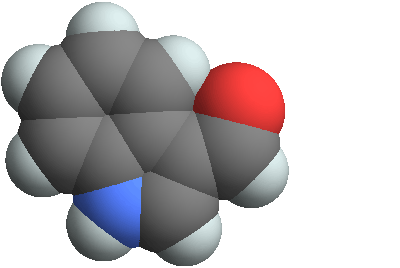
3D structure
Basic properties
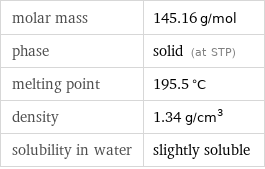
molar mass | 145.16 g/mol phase | solid (at STP) melting point | 195.5 °C density | 1.34 g/cm^3 solubility in water | slightly soluble
Units

Solid properties (at STP)

density | 1.34 g/cm^3
Units

Chemical identifiers
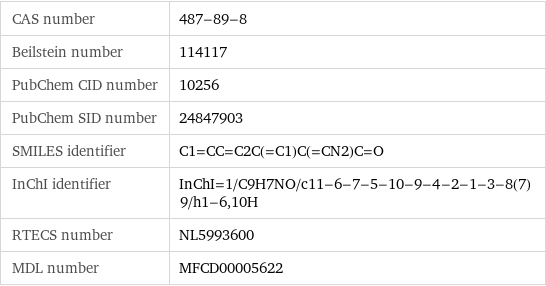
CAS number | 487-89-8 Beilstein number | 114117 PubChem CID number | 10256 PubChem SID number | 24847903 SMILES identifier | C1=CC=C2C(=C1)C(=CN2)C=O InChI identifier | InChI=1/C9H7NO/c11-6-7-5-10-9-4-2-1-3-8(7)9/h1-6, 10H RTECS number | NL5993600 MDL number | MFCD00005622
Safety properties

flash point | 240 °C autoignition point | 550 °C
Toxicity properties

RTECS classes | drug